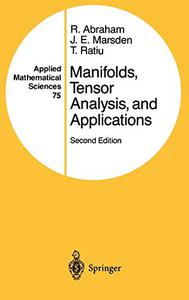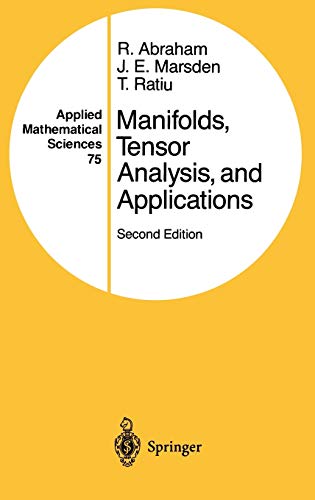
Manifolds, Tensor Analysis, and Applications by Ralph Abraham, Jerrold E. Marsden, Tudor Ratiu
English | PDF | 1988 | 666 Pages | ISBN : 0387967907 | 43.5 MB
The purpose of this book is to provide core material in nonlinear analysis for mathematicians, physicists, engineers, and mathematical biologists. The main goal is to provide a working knowledge of manifolds, dynamical systems, tensors, and differential forms. Some applications to Hamiltonian mechanics, fluid me chanics, electromagnetism, plasma dynamics and control thcory arc given in Chapter 8, using both invariant and index notation. The current edition of the book does not deal with Riemannian geometry in much detail, and it does not treat Lie groups, principal bundles, or Morse theory.

xManifolds, Tensor Analysis, and Applications

Close
Manifolds, Tensor Analysis, and Applications by Ralph Abraham, Jerrold E. Marsden, Tudor Ratiu
English | PDF | 1988 | 666 Pages | ISBN : 0387967907 | 43.5 MB
The purpose of this book is to provide core material in nonlinear analysis for mathematicians, physicists, engineers, and mathematical biologists. The main goal is to provide a working knowledge of manifolds, dynamical systems, tensors, and differential forms. Some applications to Hamiltonian mechanics, fluid me chanics, electromagnetism, plasma dynamics and control thcory arc given in Chapter 8, using both invariant and index notation. The current edition of the book does not deal with Riemannian geometry in much detail, and it does not treat Lie groups, principal bundles, or Morse theory.
Some of this is planned for a subsequent edition. Meanwhile, the authors will make available to interested readers supplementary chapters on Lie Groups and Differential Topology and invite comments on the book's contents and development. Throughout the text supplementary topics are given, marked with the symbols ~ and {l:;J. This device enables the reader to skip various topics without disturbing the main flow of the text. Some of these provide additional background material intended for completeness, to minimize the necessity of consulting too many outside references. We treat finite and infinite-dimensional manifolds simultaneously. This is partly for efficiency of exposition. Without advanced applications, using manifolds of mappings, the study of infinite-dimensional manifolds can be hard to motivate.



